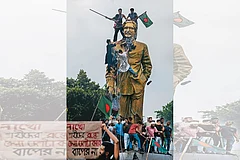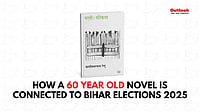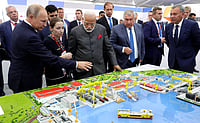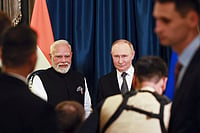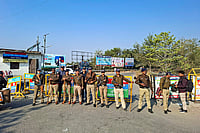The buzzword in the corridors of power in South Block nowadays is “strategic patience”—a term first used by US President Barack Obama in 2015. It is a convenient phrase to cloak setbacks in India’s troubled South Asian neighbourhood. From Afghanistan—when India went all out to back President Ashraf Ghani in 2014—and the people’s revolt in Sri Lanka in 2022 that saw the back of the Rajapaksa brothers, to the ‘India Out’ movement in the Maldives and the frequent changes in government in Nepal with leaders veering either towards India or China, the region has seen it all. Yet the unkindest cut was Bangladesh, where Sheikh Hasina, India’s closest friend and ally, had to flee the country and seek shelter here.
New Delhi’s inability to anticipate the tumultuous events that led to the ouster of Bangladesh’s Hasina or realise the strength of the student movement is a sad reflection of not just our diplomacy, but of India’s intelligence agencies that failed to gauge the mood on the streets. India was perhaps complacent, believing that Hasina could crack the whip and keep things in control as she had done in the past.
It is not that there were no signs that Hasina was getting more and more isolated from her people. “India like the rest of the world saw the hold of Hasina and the Awami League weakening over the political firmament in Bangladesh over the past two years, but chose to back her in order to counter China and keep the Islamic alternatives at bay,” says former Ambassador Anil Wadhwa. Hasina and the Awami League have always had excellent ties with India because of New Delhi’s role during the Liberation War of 1971. Her equation with the Gandhis is well known, but she also developed a close bond with Prime Minister Narendra Modi. Despite loose language used during election campaigns against alleged Bangladeshi immigrants and attacks on minorities in India, Hasina did not publicly comment or protest. When the National Register of Citizens (NRC) was updated in Assam and there was talk that illegal foreigners would be sent back to Bangladesh, she chose to trust the Indian government. Foreign Minister Subrahmanyam Jaishankar assured his counterpart that the NRC was a domestic issue and would have no repercussions on Bangladesh or on relations with Dhaka.
When Hasina came to power with a substantial majority in 2009, one of her first acts was to hand over leaders of the United Liberation Front of Asom (ULFA) to the Indian authorities. Various north-eastern separatist groups that had earlier set up camps in Bangladesh were no longer allowed to operate. This gesture of Hasina and her sensitivity towards India’s security concerns was much appreciated by both the government and the opposition in India.
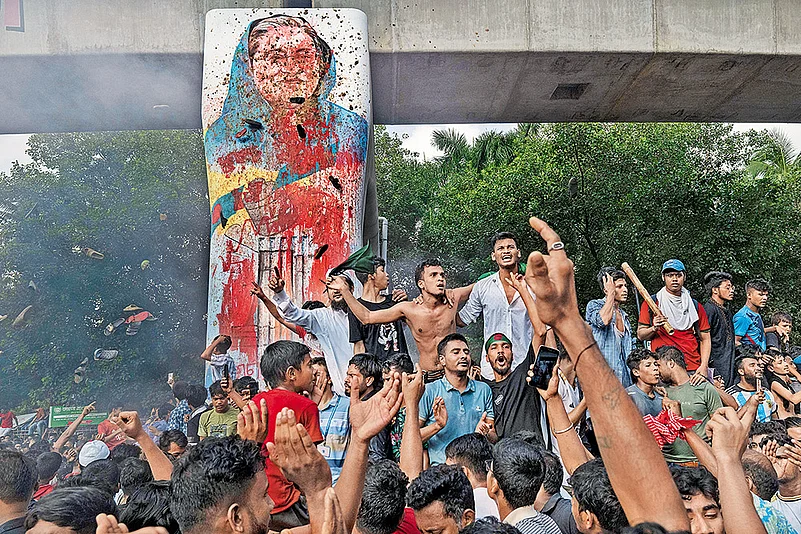
The diplomatic fallout of Hasina’s political demise is a blow for the Modi government. After investing all its time, energy and resources on Hasina during her 15 years in power, India is rudderless. With Nobel Laureate Muhammad Yunus in charge, New Delhi would be slightly reassured. Yunus has an international image and is close to both the US and Europeans. He has sent out the right messages so far, assuring the minorities that they will be protected; visiting the Dhakeshwari Temple to meet with a nervous Hindu community; and, restoring law and order. Yet, there is nervousness in New Delhi whether Yunus will be able to follow through, considering that the situation continues to remain fluid.
Hasina has blamed the US for working against her after she refused permission for an American base in Bangladesh. However, blaming a foreign hand without considering her own shortcomings is typical of South Asian leaders. In the past, Indira Gandhi would often talk of a ‘foreign hand’ and Imran Khan also blamed the US after losing the vote of no confidence.
There had never been much bonhomie between Hasina and the US, going back to the time when Washington backed the Pakistan Army against the Mukti Bahini during the 1971 war of liberation. The US had in the last few years called out the Awami League government for democratic backsliding. During the run up to January’s controversial elections, the US had backed the demand for a caretaker government that opposition parties wanted. India and the US were on opposite sides on Bangladesh, with New Delhi batting for Hasina. But the differences did not hurt India-US relations, with Washington engaging with Hasina after the elections. According to US reports, the softening was on New Delhi’s request.
India’s concern is not so much with the interim government, but the outcome of the elections that will follow, whenever they are held. “The Bangladesh Nationalist Party (BNP) led by Khaleda Zia, and its allies in particular, are seen in India as being under the influence of Pakistani elements like the ISI which are inimical to Indian interests. New Delhi now faces a formidable diplomatic challenge in Bangladesh and the relationship will face some near-term setbacks,” says Wadhwa. Moreover, the presence of the Jamaat-e-Islami, which was against the liberation and worked with the Pakistani army during the war, remains a constant worry for India.
Repairing ties with Bangladesh won’t be easy, considering the bitterness and anger over India’s unstinted support for Hasina and the Awami League. “It will have to be done slowly, step by step,” says Rajiv Bhatia, a former diplomat who follows the region closely. There was disappointment in Dhaka over Jaishankar’s statement on Bangladesh in Parliament. The fact that there was no mention of the number of protestors killed by the police in Jaishankar’s statement was noted.
The diplomatic fallout of Hasina’s political demise is a blow for the Modi government. After investing all its time, energy and resources on Hasina during her 15 years in power, India is rudderless.
But Yunus took the first step in establishing high level contact by dialing Prime Minister Modi. He assured the PM that his government would prioritise protection and safety of Hindus and other minorities living in Bangladesh, indicating that the interim regime is ready to extend a hand of friendship. He is also attended the virtual Global South summit hosted by India on August 17. Modi has publicly expressed his concern for the Hindus living in Bangladesh when reports of attacks on temples and properties of minorities started pouring in following Hasina’s ouster.
The presence of Hasina in India has further complicated the matter. Now that a case has been filed against her—by the father of one of the victims killed during the protests—Dhaka may ask for her extradition. That will place New Delhi in a predicament. Handing over one of India’s closest friends in the region will send across a terrible message to the rest of the neighbours, and mark India as an unreliable ally. The process has not started yet, so the sooner Hasina moves out and finds a country that will accept her, the better.
India’s challenge now is to break with the past and begin afresh with the new power centre in Dhaka. New Delhi will have to send out a message that they are with the people of Bangladesh. The government to government relations that was the hallmark of the Hasina era has not worked. It is people to people ties that will finally determine the relationship, especially between neighbouring countries.
“Now is moment to delve deep into our bilateral relations and ask where we went wrong and how we put it on firmer ground. For the last 15 years, India looked at Bangladesh only through Hasina’s eyes and gulped her narrative literally without questioning. India was just happy that its security concerns were addressed,” says Mahfuz Anam, editor of The Daily Star, Dhaka’s prestigious English newspaper.
Yes, India has always looked at Bangladesh through the prism of security. When Pakistan was one country, it was a security nightmare for India as it had two flanks to cover. In the early years after Independence, as the government struggled to build a new nation, India had to deal with two major insurgencies in the north-eastern region, beginning with the Naga bid for a separate country followed a decade later with the Mizos rising in armed revolt. Insurgent groups would attack Indian positions and escape through the thick jungles to East Pakistan where they had their camps. Pakistan was funding, training and arming all north-eastern separatists in those early years. The creation of Bangladesh and having a friendly government in Dhaka was to have ensured the security of India’s eastern border. But that was not to be with Sheikh Mujibur Rahman’s assassination within three years and a succession of military dictators taking over. This was one reason why New Delhi was such a staunch supporter of Hasina’s Awami League government. This cocooned India from what else was happening.
“As relations with Hasina grew stronger, India’s relations with the people of Bangladesh grew weaker with the rising unpopularity of her party and government. Now is the time to take a broader and deeper look with a lot of introspection and soul searching with sincerity and with an open mind,” says Anam. “India must see Bangladesh as an aspiring democracy and not always as a country of potential religious extremism. We will fight extremism effectively ourselves. Religiosity should not be mixed up with religious fundamentalism. This is where deeper understanding must start from,” adds Anam.
And what will happen to the Bay of Bengal Initiative for Multi-Sectoral Technical and Economic Cooperation or BIMSTEC? This was put in place to offer an alternative platform to South Asian Association for Regional Cooperation (SAARC) that could do little as it was bogged down by India-Pakistan rivalry. New Delhi then brought together Bangladesh, Myanmar, Sri Lanka, Thailand, Bhutan and Nepal to work on regional cooperation. Ironically, governments both in Bangladesh and Thailand have changed. A BIMSTEC summit is scheduled to be held in early September in Bangkok, but whether the date will be pushed back is not known. If Yunus attends the summit, it will be his first interaction with Modi.
For all the anger and disappointment with India, it is also a fact that Bangladesh cannot ignore its closest neighbour or turn away from the huge economic benefits that co-operation between the two countries provides. The India-Bangladesh annual bilateral trade is worth $13 billion. Discussion about a free trade agreement was also on the cards. “Economic forces will work in favour of Bangladesh and India coming together especially in the area of connectivity,” says Wadhwa.
MORE FROM THIS ISSUE
Yes, it does not have to be all doom and gloom; a new path can, and should be taken.
(This appeared in the print as 'Rapids Ahead in the Teesta')

















